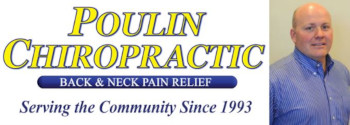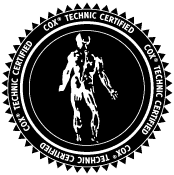SIze of a Ashburn and Herndon Disc Herniation Doesn't Matter
My back pain is gone! ... What happened to the disc?
A Ashburn and Herndon disc herniation is just as annoying as a disc herniation in Chicago or New York. Pain relief is all you want. Does it matter what the disc looks like when the pain goes away? Not really, but it is a curiosity.
In the same way that an MRI reveals several disc herniations in a patient with minimal to no symptoms, the disappearance of pain in a patient with pain due to a disc herniation may be due to the disc's not reducing at all ... or reducing a little or even getting larger. The goal of treatment at Poulin Chiropractic of Herndon and Ashburn in Ashburn and Herndon is pain relief which entails a reduction of irritating factors be they mechanical, chemical or other.
Hummm...
When pain due to a disc herniation finally goes away, it is often a cause for celebration, but curiosity as to what happened to the disc may come into question. Amazingly, the size of the disc herniation may completely shrink, stay the same, or even enlarge as you heal and become relieved of your spine and/or extremity pain under non-surgical care. Keep in mind that 76% of us show a herniated disc on an MRI even when we have no symptoms. (1)

For example,
- Repeat MRI following successful relief of back and extremity pain under conservative care such as Cox Flexion Distraction and Decompression spinal manipulation showed reduced disc herniation size in 35% to 100% of cases. (2)
- Nine of 11 disc herniation fragments shrunk 50% to 100% in proven disc extrusions with muscle weakness. (3)
- Thirty six patients who had a disc herniation (protrusion, extrusion, or free fragment) identified on their first examination had a repeat MRI which showed
- 57% of MRI disc herniations decreased in size,
- 39% were unchanged, and
- 2 actually increased in size. (4)
- Interestingly, a simple pinch of the sciatic nerve for as brief a time as 2 seconds produces pain. (7)
The clinical outcome does not depend upon the size of the disc herniation of degree of spinal degeneration.
- Researchers followed twenty-one patients for 7 years after being treated non-surgically for a lumbar disc herniation.
- At least 3 MRIs were taken at the beginning of care, at 2 years after care and at the end of the 7 year study.
- Though there was significant reduction at the 2 years' and 7 years' studies and more degeneration of the disc, the clinical outcome did not depend on the size of the herniation or the amount of degeneration of the disc. (6)
- Even "massive" lumbar disc herniations treated non-surgically were shown at two years' follow-up to reduce by an average of 64% in size and disability reporting changed from 58% to 15%. Only 4 out of 37 patients ultimately required surgery. (10)
- Correlation of MRI-noted changes in 70 symptomatic lumbar disc herniation patients reveals that the shape and size of the protruded nucleus pulposus of the disc has no relation to a patient's clinical presentation (objective test results or self-reported pain complaints). All patients had completed a successful spinal manipulation treatment plan before the final MRI. (8)
- Some fragments show an obvious decrease in size (7 of 77 even disappeared). What contributed to this? Many factors helped surely but vascular supply played a role. (11)
- Free fragments may be resorbed by phagocytes/macrophages. (12)
Closing Comments on Size of Disc Herniation
Regardless the size or size reduction, Ashburn and Herndon disc herniation patients are relieved of their pain even though the disc herniation may not 100% reduce. The reason for the pain relief is the reduced compression and inflammation on the nerve root at the spine level as a result of non-surgical care. That is also why we can have a disc herniation and experience no pain - the pressure on the nerve is below the level that causes pain. Finally, a disc herniation may regress or even disappear in a number of patients. This knowledge of the disc's behavior reduces the significance of radiological findings like MRI in deciding on surgery for a disc herniation. (5) A thorough clinical examination and treatment plan to include careful clinical monitoring of symptoms ensures the best clinical treatment plan and outcome.
A Chiropractic Treatment Plan in Ashburn and Herndon for Disc Herniation Pain Relief
Poulin Chiropractic of Herndon and Ashburn's chiropractic, non-operative care is shown to be a safe and helpful treatment of cervical spine and lumbar spine disc herniations. A study of 27 patients with MRI documented disc herniations revealed that 80% of them reported a good clinical outcome after care. Their MRI scans showed that 63% had a reduced or completely resorbed disc herniation. 78% of the patients returned to their pre-disability occupations. (9)
A disc herniation is painful. The size of the herniation doesn't affect the desired clinical outcome and goal of treatment: pain relief. Non-surgical care is shown to successfully relieve the pain, and in Ashburn and Herndon, Poulin Chiropractic of Herndon and Ashburn is ready to help you.
Contact your chiropractor at Poulin Chiropractic of Herndon and Ashburn in Ashburn and Herndon today for your examination and treatment plan to relieve your disc herniation pain.


